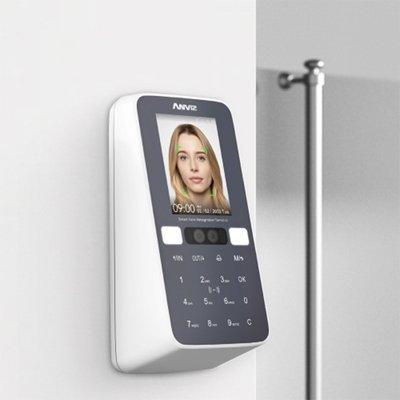 |
| Energy efficiency extends beyond a company’s running costs vs. its carbon |
Even as manufacturers are becoming greener and innovation is reducing our industry’s carbon footprint , is there more we could be doing? Can we adapt our general operational methods to be smarter and help save the planet? Are we learning from other industries, do we absorb things quickly enough, and are there some lessons we simply don’t want to learn?
Remote system diagnostics approach
Accepted working styles are often profitable for integrators and can slow down innovation. Only recently have integrators recognised that remote system diagnostics means fewer site visits, less disruption to the end user’s business and greener practice in terms of fewer vehicle miles. Is it cynical to suggest that taking this approach may have been slow because it reduces billable man- hours? Should we be frustrated that significant (and ultimately green) developments such as the ability to control a PTZ remotely via an app have only been introduced after similar technology has been used for several years in home automation?
Installers and the whole security community need to recognise that the phrase “energy efficiency” extends beyond mere running costs to the carbon footprint of an organisation. Increasingly, managers want to know if operational advantages derived from intelligent use of security technology will be reflected in green benefits.
A few examples are obvious, and the Canadian manufacturer Senstar has introduced a surveillance robot that travels on a monorail, constantly patrolling a perimeter, moving to the site of possible breaches after analysing video and interacting with suspected intruders via public address. The environmental advantages of such a product compared to a guard patrolling an extensive perimeter in a fuel-consuming, exhaust-emitting truck are overwhelming. The R&D expenditure involved in such a solution is no doubt extensive, but the essential idea stems from alert minds combining existing technology to create a product that is not only green but probably offers the end-user prompt return on investment (ROI).
This monorail robot is an exceptional case, and ROI from improved carbon practice in the security sector as opposed to the “feel-good” intangibles of responsible corporate citizenship is a long way off. Ultimately, the most likely driver of improved carbon management from non-technological factors will be legislative authorities that have teeth. Anybody who doubts this might like to consider the rigour with which the United States Environmental Protection Agency (EPA) has begun overseeing the impact of federal construction projects.
 |
| Creative thinking can be just as effective as technological innovation for green security practices, as demonstrated by the prisons training eagles to intercept drones |
Convergence of IT and physical security
Endeavouring to make equipment perform multiple and disparate roles is an obvious financial economy that is also green. Convergence of IT and physical security has received much attention recently, and there are more unusual examples of multi-tasking that should be discussed here. A notable instance is video analytics within cameras including an algorithm to alert on the shape and movement pattern of flames as well as the standard scenario of an intruder. Leaner, more versatile (and therefore greener) security technology can be as much about open minds as open protocols.
Technological innovation and open thinking
The modish phrase “enterprise security” need not involve exceptional innovation in terms of technology but may simply view disciplines such as access control and fire detection from a similar perspective. Open thinking of this kind will always involve less hardware and therefore be carbon friendly. We shouldn’t have to take all our cues from Microsoft, but the company has been indisputably green in creating two Global Security Operation Centres that combine physical security infrastructure with IT practices. (This is while many of the companies using their products see squabbles between IT and security over sharing a bit of closet space.) The two centres monitor 840 sites worldwide, which involve the small matter of 14,000 access card readers and 15,000 video cameras not to mention duress alarms and biometrics.
Finally, my favourite piece of current green security practice that involves no technological innovation, is indisputably carbon-neutral and involves a solution that has been around for 1,500 years. Flying contraband into prisons on drones has become a major threat to the integrity of custodial perimeters. But before investing in PIR sensors and fence-mounted analytics cameras, prison governors might consider a flying squad with a difference. Earlier this year and following a trial by Dutch police, Scotland Yard announced that it was training eagles to intercept drones and with remarkable success. It’s a headline writer’s dream in which the eagle has not so much landed as taken off. Anybody concerned for the welfare of the birds should note that they intercept the drones in such a way as to avoid the rotors and are of course rewarded with food after every strike. Low tech defeats high tech and proves indisputably green.










































